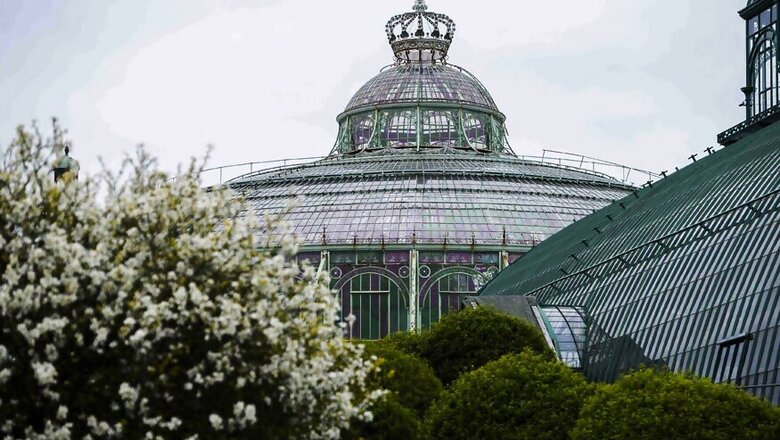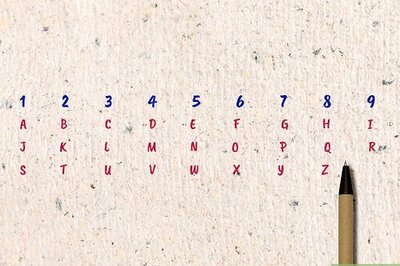
views
In an annual rite of spring in Belgium, the domed 18th century greenhouse complex on King Philippe's Brussels estate opened to the public on Friday.
For the next three weeks, visitors can wander through an architectural jewel commissioned by his forebear King Leopold II to show off tropical and other plants.
The plants are now at their peak flowering in the warm, moist air under the glass and steel domes of the Royal Greenhouses of Laeken.
There are palm trees, giant ferns, orange and lemon trees, geraniums, camelias, hortensias, fuchsias and azaleas.
King Philippe, Queen Mathilde and their four children live on the estate where King Leopold had the greenhouses built between 1874 and 1905.
"He (Leopold) was a great collector of plants," recalled Michel Dekens, the complex's caretaker. "He was also someone with a very strong interest in architecture."
He told journalists the complex was built not only to satisfy the former king's twin passions for plants and architecture but also to host receptions and conferences.
He did so at a time when Belgium began to impose itself on the European stage -- just decades after independence when Belgium's industries were flourishing and the nation was engaged in its colonial enterprise in the Congo.
However, under Leopold II, the Congo was ruthlessly exploited for natural resources and became the site of some of the worst atrocities of the colonial age.
Dekens said "the winter garden," the oldest and most imposing greenhouse with its dome supported by neo-classical columns, still serves as a reception centre.
Indeed, "Philippe and Mathilde," as Belgians affectionately call them without their formal titles, will receive foreign ambassadors there next week.
'Original spirit'
At the heart of the "winter garden" stands the only tree to have been planted when the complex was built: an Oreopanax dactylifolius from Mexico, a rare plant whose foliage reaches the dome.
"That's the advantage of this tree. We can trim it," Dekens said. "As for the palm trees, when they start touching the glass, we have to cut them down."
The greenhouse's palm trees are descended from the seeds of trees that came from the Congo and the Far East and were planted during Leopold's reign, according to Pierre Emmaneul De Bauw, spokesman for the royal household.
The 15 or so gardeners who work year round in the greenhouses "try to preserve the original spirit" of the place, De Bauw said.
Its architecture was at the cutting edge of its time.
Leopold II, he said, "wanted to exploit the completely new idea" and techniques to build with steel and glass.
At least 100,000 foreign and Belgian visitors are expected to tour the greenhouse complex until its closure on May 5.
If previous years are a guide, they will queue for hours to enter the greenhouses, rain, shine or wind.



















Comments
0 comment